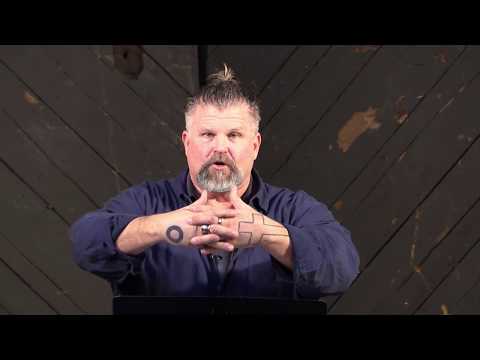
Revelation 17 Part 1 Bible Teaching
Revelation 17 is interpreted as the judgment of Jerusalem, not Rome, symbolizing Old Covenant Judaism's fall in 70 AD. Shawn contrasts Jerusalem's corruption with the Church's purity.

Revelation 17 is interpreted as the judgment of Jerusalem, not Rome, symbolizing Old Covenant Judaism's fall in 70 AD. Shawn contrasts Jerusalem's corruption with the Church's purity.

The teaching links Revelation 16's imagery of division and judgment with Ezekiel 5's destruction of Jerusalem, highlighting themes of divine retribution and historical parallels.

Paul and Shawn emphasize unity, humility, and accountability to Christ, rejecting human judgment and divisions. They stress God's ultimate judgment and the futility of self-exaltation.

Paul and Shawn teach that believers are the true temple of God, emphasizing faith in Christ over human wisdom. Christ's sacrifice shifts focus from punishment to rewards, with salvation through faith and spiritual integrity. Believers are urged to prioritize their relationship with Christ, avoiding division and glorifying individuals.

Shawn's teaching on Revelation 16 focuses on bowl judgments targeting Israel, especially Jerusalem, with historical context and symbolic imagery, emphasizing repentance.

Revelation 15 connects end-times judgments, transitioning from seals and trumpets to bowls, marking God's wrath's culmination, Christ's victory, and saints' deliverance.

Paul's teaching: Saved by grace, rewarded by labor. Build on Christ's foundation with valuable teachings (gold, silver), not unstable doctrines (wood, hay). Actions over feelings.

Revelation 14 describes two angelic reapings, symbolizing divine judgment and salvation, linked to Jerusalem's fall in A.D. 70, using metaphorical imagery of harvests.

Paul and Shawn teach unity in faith, emphasizing God's role in growth. Believers should avoid divisions, focus on Christ, and recognize all roles as equal under God.

Shawn's teaching on Revelation 14 highlights eternal judgment for the unsaved, the perseverance of saints, the significance of faith and works, and the symbolic 144,000 as all redeemed believers.

Babylon's lawlessness, mark of the Beast vs. God's seal, spiritual alignment, consequences of worshiping the Beast, and symbolic destruction of wickedness in Revelation.

Paul contrasts God's unknowable mind with believers' access to Christ's mind, stressing spiritual maturity through the Spirit. Shawn McCraney likens the Trinity to human body, soul, spirit unity. Believers must mature from "milk" to deeper faith, embodying love and spiritual fruits, overcoming worldly distractions, and understanding God's will.

Shawn's teaching links Revelation's prophecies to Nero, Rome's structure, and persecution, highlighting the beast's symbolism, 144,000 sealed, firstfruits, and eternal gospel.

Paul and Shawn emphasize the distinction between worldly and divine wisdom, highlighting spiritual discernment, peace, and understanding through the Holy Spirit.

The teaching highlights the dynamic, spiritual interpretation of scripture, the Spirit's role in understanding divine truths, and the feminine aspects of the Holy Spirit.

Shawn's teaching examines Revelation 13, focusing on the second beast's power, Nero's myth, and the Roman Empire's continuity. He uses Gematria to link 666 to Nero, exploring historical persecution of Christians and Nero's brutal reign, seen as fulfilling prophecy.

Paul's teaching in 1 Corinthians 2:1-5 focuses on Christ's crucifixion, God's power over human wisdom, humility, and faith, avoiding eloquence and worldly intellect.

Shawn's teaching on Revelation 13 explores Israel's worship of the beast, Nero's persecution, the concept of antichrists, and the symbolism of the two beasts and 666.

Revelation 13's beasts symbolize Roman Empire's Caesars, with Nero's persecution aligning with prophecy. Shawn refutes futurist views, emphasizing historical context.

God uses the weak to fulfill His purposes, ensuring no boasting. Believers gain righteousness, sanctification, and redemption through faith in Christ, not human wisdom.

Shawn's teaching on 1 Corinthians 1:18-31 emphasizes God's use of the foolish and weak to confound the wise, highlighting humility over pride and spiritual wisdom over worldly wisdom.

Shawn's teaching covers Revelation 12, Satan's defeat by Michael, his expulsion post-crucifixion, early Christians' perseverance, and parallels with Israel's wilderness journey.

Revelation 12's symbolic vision of a woman, child (Jesus), and dragon depicts cosmic battles, Jesus' resurrection, Satan's defeat, and believers' spiritual rebirth.

Paul emphasizes unity in Christ, discourages allegiance to human leaders, focuses on the Gospel's simplicity, and highlights salvation through Jesus' sacrifice.

Shawn's teaching on Revelation 11:14-19 highlights the transition of worldly kingdoms to God's eternal reign, the role of Jesus, divine influence over history, and final judgment.

Paul and Shawn both emphasize unity among believers, focusing on love, avoiding divisions, and spiritual maturity. They stress moving from basic teachings to deeper understanding.

Shawn's teaching on Revelation highlights three woes as divine judgments for repentance, culminating in Christ's spiritual kingdom, countering materialistic views like Mormonism.

Paul's letter to Corinthians highlights gratitude for grace, spiritual enrichment, empowerment by the Spirit, living blamelessly, and intimate fellowship with Christ.

Shawn's teaching on 1 Corinthians emphasizes spiritual growth, historical context of Corinth, Paul's challenges, apostolic authority, and the importance of scripture over experiential religion.

Shawn's teaching interprets Revelation 11 through a Preterist lens, linking the two witnesses to Jesus, historical events like the Jewish War, and the fall of Jerusalem in A.D. 70.